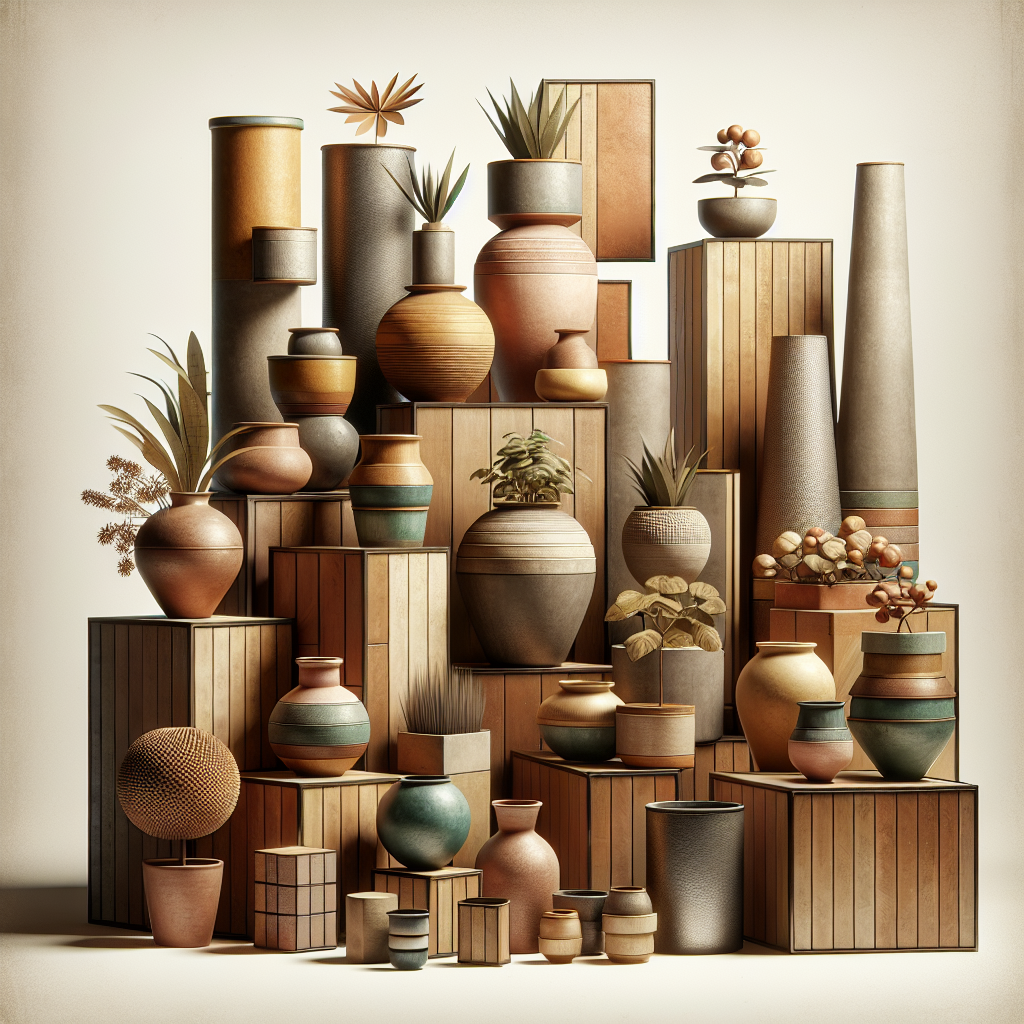Table of Contents
Container gardening is a great way to add beauty and charm to any outdoor space, whether it’s a small balcony, patio, or even a large garden. The key to creating a visually appealing container garden lies in the arrangement of the plants within the container. By understanding and applying the principles of container arrangement, you can maximize the aesthetic appeal of your container garden and create a stunning display that will impress all who see it.
When it comes to container gardening, there are several key principles that can help you create a beautiful and harmonious design. From choosing the right plants to arranging them in an eye-catching way, each step plays a crucial role in maximizing the aesthetic appeal of your container garden. By following these principles, you can create a stunning display that will enhance your outdoor space and bring joy to all who see it. So let’s dive into the world of container arrangement and discover how you can create a truly remarkable container garden.
Choosing the Right Plants
Selecting the right plants for your container garden is essential for creating a visually appealing display. When choosing plants, consider factors such as color, texture, height, and growth habits. Aim for a mix of plants with different colors and textures to create interest and contrast in your container garden.
It’s also important to consider the mature size of each plant when selecting them for your containers. Make sure to choose plants that will not outgrow their containers or overshadow other plants in the arrangement. Additionally, select plants with similar water and light requirements to ensure they thrive together in the same container.
Creating Balance
Balance is key when arranging plants in containers. Aim for symmetry or asymmetry depending on your personal preference and style. For symmetrical arrangements, place taller plants in the center or at the back of the container and surround them with shorter plants on either side for a balanced look.
If you prefer asymmetrical arrangements, play around with different heights and textures to create visual interest. Consider using odd numbers of plants (e.g., 3 or 5) for a more dynamic look. Experiment with different combinations until you find a balance that works well for your container garden.
Layering Plants
Layering plants is another important principle of container arrangement that can add depth and dimension to your display. Start by planting taller plants at the back or center of the container as focal points. Then layer medium-height plants in front or around them followed by trailing or cascading plants along the edges of the container.
By layering plants based on their height and growth habits, you can create a more dynamic arrangement that is visually appealing from all angles. Consider varying foliage colors and textures within each layer to enhance contrast and create a cohesive look.
Considering Proportion
Proportion is an essential element of good design when it comes to container gardening. Make sure that the size of your container is proportionate to the size of the plants you are using. Avoid overcrowding or under-filling your containers as this can disrupt visual balance and harmony.
Consider using tall containers for tall plants and wide containers for spreading or cascading plants to maintain proportion within your arrangements. Play around with different shapes and sizes of containers until you find what works best for your chosen plant combinations.
Adding Accessories
Accessorizing your containers can take them from ordinary to extraordinary by adding an extra layer of visual interest. Consider adding decorative elements such as trellises, stakes, rocks, pebbles, or ornaments to complement your plantings.
You can also use colored pots or unique planters as accessories themselves to add personality and flair to your container garden design. Be mindful not to overdo it with accessories; instead, choose one or two focal pieces that enhance rather than detract from your plantings.
Maintaining Your Container Garden
Once you have arranged all your plants and accessories in your containers, it’s essential to maintain them properly for long-lasting beauty throughout the season(s). Water regularly based on each plant’s specific needs (some may require daily watering while others only need occasional watering).
Fertilize periodically according to plant requirements (consider slow-release fertilizers) and remove any dead or yellowing leaves promptly as needed (pruning may also be necessary). Pay attention to plant placement if certain ones require more sunlight/shade than others do – rotate pots accordingly every few days/weeks if necessary!
By following these principles of maximizing aesthetic appeal through proper
container arrangements – choosing suitable flora types; creating both symmetry/ asymmetry patterns; layering greens effectively based upon size & texture differences – adding appropriate accessories like trellis supports where needed without overpowering interiors too much just enough decoration so they stand out beautifully; maintaining proper upkeep regimens including timely watering cycles/treatments EVEN WITHOUT rain due lack thereof…your creations will THRIVE abundantly!
**FAQ**
Q: Can I mix different types of flowers in one pot?
A: Yes! Mixing different types of flowers can create an interesting visual contrast in your containers.
Q: How often should I water my container garden?
A: Water needs vary depending on plant type but typically aim for once daily during hot weather.
Q: Can I place indoor houseplants outdoors in my containers?
A: Some indoor houseplants may be suitable outdoors but check their light requirements first before transplanting.
Q: Is it possible to over-fertilize my potted plants?
A: Yes! Over-fertilization can harm roots drink too much water thus EXPLODING leaves/flowers prematurely die off!
Q: What should I do if my potted plant looks unhealthy?
A: Identify problem areas like insufficient sunlight/overwatering/frost damage then act quickly resolve issue(s).
In conclusion…growing beautiful flowers/herbs/vegetables/etc…is attainable anyone willing put effort time learning how maximize aesthetic appeal thru proper care practices described within this guidebook firsthand!














